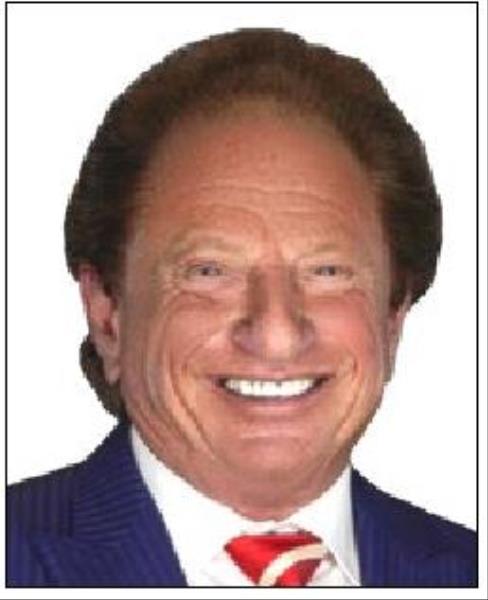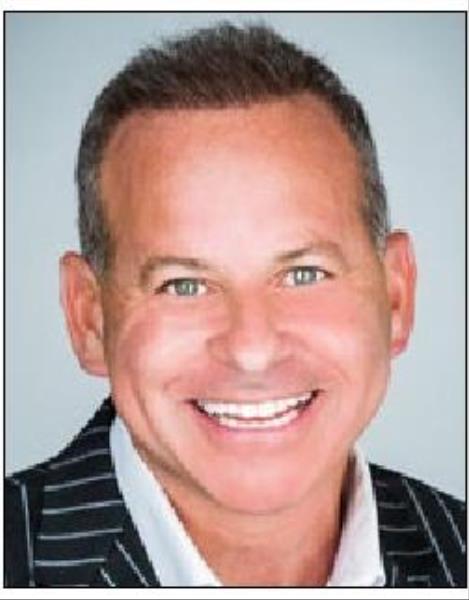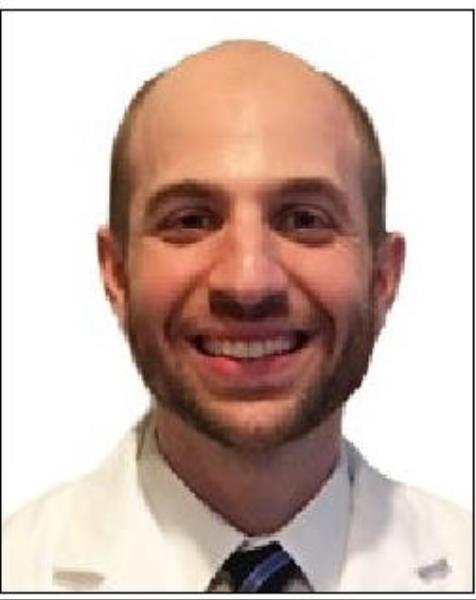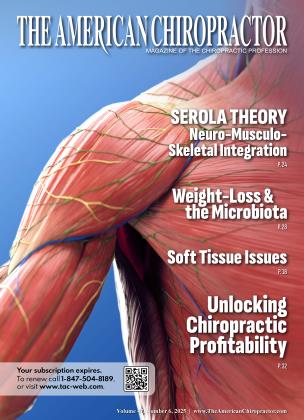
IN A WORLD OBSESSED WITH QUICK FIXES AND WEIGHT-LOSS FADS, it’s easy to overlook the body’s own natural healing powers. But what if the secret to shedding fat and regaining energy isn’t found in a prescription bottle, but in your hormones? In this article, Drs. Eric Kaplan, Perry Bard and Jason Kaplan reveal how tapping into your body’s fat-mobilizing hormone (FMH) can transform the way you think about health, weight, and longevity—naturally and effectively.
One lesson from my professional training sticks with me: the power that created the body has the power to heal it. As I travel the country working with chiropractors and medical doctors, I’m constantly amazed by the body’s innate ability to restore itself when given the right tools. Today, everyone’s looking to turn back the clock—lose weight, feel vibrant, stay healthy. But drugs like Ozempic or other quick fixes aren’t the answer. Instead, we need to look deeper, to the hormones and natural processes that can unlock real, lasting change.
In this article, I’ll introduce you to a powerful ally in your weight-loss journey: the fat-mobilizing hormone (FMH). I’ll explain how to harness it by making simple but effective changes to your diet and lifestyle. Change isn’t always easy, and I know some of you might be skeptical. But let me ask: Is what you’re doing now keeping you slender, healthy, and happy? Are your patients thriving, or are they leaning on weight-loss drugs to get by? If you’re open to a new perspective,
FMH could be the game-changer you’ve been searching for.
FMH isn’t a single hormone like leptin or glucagon but a collective term for hormonal responses that promote fat breakdown when carbohydrates are restricted. Hormones like glucagon and growth hormone play key roles, mobilizing stored fat for energy.1-2 When you drastically reduce sugars and refined carbohydrates, FMH springs into action. It attacks stored fat, breaking it down and making it available as fuel for your body. This means you lose pounds— and, better yet, from the areas you most want to trim, like the waist or hips.
Research backs this up. English researchers Professor Kekwick and Dr. Pawan found FMH in the urine of people on low-carb diets after just 48 hours, alongside ketone bodies—proof the body was burning fat for energy.3 Compare that to high-carb diets: no FMH was found in urine samples from those eating carbs, even when they were on strict 1,000-calorie plans and still not losing weight.3 Carbs shut FMH down, locking fat in place. But remove them, and your body flips a metabolic switch, boosting energy and shedding pounds fast.
This isn’t just theory—it’s biology at work. FMH tells your body, “Break down the fat; I need energy!” The result? Weight loss, increased vitality, and a process that starts almost immediately after you cut refined carbs from your diet.
Don’t miss out on better health because you’re unwilling to try something new. Over the years, many of my patients—some skeptical at first—have thanked me for introducing them to these principles through my books on health and weight loss. Their success proves it: embracing change can lead to breakthroughs, for you and your patients.
The idea that hormones and diet can transform weight loss isn’t new. After World War II, Dr. Alfred W. Pennington, working with the DuPont Company, tackled a puzzle: why did low-calorie diets fail so many employees? He suspected obesity wasn’t just about overeating but a metabolic defect—an inability to process carbohydrates efficiently.4 His solution was a ketogenic diet: no sugars or starches, just proteins and fats.
Pennington tested it on 20 volunteers, allowing them up to 3,000 calories a day with no restrictions if they were hungry. The results? They lost an average of 22 pounds in three and a half months, felt great, and reported no hunger.4 Those with high blood pressure saw it drop alongside their weight. Pennington’s work showed that calorie counting isn’t the key—flipping the metabolic switch is.
Another critical piece of the puzzle is water. I had the privilege of meeting Dr. Stillman, a pioneer of the water diet, in Las Vegas. Over blackjack and dinner, we talked about his principles. At the time, bottled water wasn’t common, but Stillman knew water’s power to cleanse the body, support cells, and aid weight loss.
When Cola Shocked Congress
In 1951, Dr. Cornelius McCay, a U.S. Navy nutritional researcher, dropped a bombshell during a congressional hearing. Testifying about Coca-Cola, he revealed its phosphoric acid was so potent it softened human teeth in hours at his Naval Medical Research lab 7. “The acidity rivals vinegar,” he said, “but sugar, caffeine, and flavorings hide it, so kids don’t realize what they’re drinking.”
Congress was stunned. When asked who regulated soft drinks, McCay shrugged, “No one, as far as I know” T X congressman chimed in, claiming a friend saw cola dissolve iron nails in 48 hours. McCay didn’t bat an eye: “Phosphoric acid could eat through iron or even limestone. Spill it on the Capitol steps, and you’d see erosion” 7. This jaw-dropping moment exposed how little oversight protected kids from sugar-laden drinks— decades before we fully grasped their health impact.
Dr. Donald Robertson, MD, explains why: water suppresses appetite and helps the body mobilize stored fat. Without enough, the kidneys struggle, dumping work onto the liver, which is supposed to metabolize fat into energy. If the liver’s busy covering for the kidneys, it can’t burn fat efficiently, and weight loss stalls.
Water does more. It prevents fluid retention by signaling the body it’s safe to release stored water, reducing swelling in feet, legs, and hands. It maintains muscle tone, prevents sagging skin after weight loss, and flushes waste from fat breakdown. It even relieves constipation, a common issue when shedding pounds.
How much water? Aim for eight 8 oz. glasses daily (64 oz. total)—more if you’re overweight (add one glass per 25 pounds of excess weight), exercise, or live in hot weather. Cold water is best; it absorbs faster and may burn extra calories.
Over the evening with Dr. Stillman, I also had the pleasure of meeting his niece. When I noted that she was not thin, the trim Dr. Stillman, who always seemed to have a glass of water in his hand, said simply, “I haven’t seen her drink her water tonight.” This brought me to the realization that if we are to achieve weight reduction, we must not only follow the pioneers of the weightloss industry, but we also must follow the pioneers who live by their own rules. The Sugar Epidemic
Sugar is a major roadblock to FMH and health. It’s everywhere, especially in childhood. I remember a 20/20 episode with Barbara Walters exposing BeechNut’s “pure apple juice” as a chemical cocktail of fructose and glucose—no apples at all. The company paid $2 million in fines in the biggest economic court case in Department of Justice history, but the lesson lingers: what we think is healthy often isn’t.5
I’m not surprised that our children graduate from the nipple to the needle. Their well-meaning parents are the first ones to introduce them to an addictive substance—sugar—in the form of baby formula or “pure” fruit juice.
Sugar dominates our diets, especially in youth. Kids grow up on Frosted Flakes, white bread sandwiches with sugary condiments, and refined-flour pasta, with cookies as rewards. Soft drink consumption doubled from 16.2 gallons per person in 1962 to over 30 gallons by 1972, replacing milk and coffee.6 Experts estimate 25% of U.S. sugar intake comes from sodas.6 This early exposure primes kids for cravings; it’s hardly surprising that so many of these children later turn to alcohol, as they chase the same rush from non-nutritive drinks.
Our addiction to soft drinks begins in the cradle and ends in the grave. This early sugar addiction sets kids up for weight gain, diabetes, and even neuropathy. That’s why we host seminars at Life University and in Florida, teaching doctors and patients how to break free from sugar’s grip and harness hormones for healing.8
My search for the perfect diet was a personal mission. I read everything— Fredericks, Kekwick, Pawan, Atkins, Stillman, Bloom, and more. I became my own lab rat, testing their ideas. Meeting Dr. Atkins in New York and Dr. Stillman in Vegas gave me firsthand insights. Atkins downplayed water but restricted carbs; Stillman swore by water’s cleansing power. Both programs restricted sugar and carbohydrates. I came up with a formula that included:
• No sugar or refined carbohydrates.
• Eight 8 oz. glasses of water daily.
• Moderate fat intake, plus vitamins and amino acids to support hormones.
I cut salt, added water, and watched the pounds melt away. My skin cleared, my energy soared, and hunger vanished. I shared this with patients at my five clinics, seeing 350-1,000 people weekly. The results were incredible—letters poured in from grateful patients.
This journey led to my first book, Lifestyles of the Fit and Famous, endorsed by Donald Trump, who’s on the cover.9 It also took me to Nutrisystem’s helm and an advisory role with the President’s Council on Sports and Physical Fitness under President Clinton, where I worked alongside Dr. Jocelyn Elders to educate kids about sugar’s dangers.
The pioneers I studied—Atkins, Stillman, Fredericks, Pritikin—had differences but shared core truths. Atkins and Fredericks slashed carbs and sugar. Stillman pushed water. Pritikin cut fats. I mixed these like peanut butter and jelly, creating a plan that worked for me and thousands of others.
Here’s what I learned:
• No refined carbs means no hunger. Your body shifts from a carb-burning machine to a fat-burning one.
• Water flushes ketones during ketosis, keeping your metabolism humming.
• Vitamins and amino acids support hormone production, amplifying FMH’s effects 10.
This approach isn’t about starvation or willpower—it’s about biology. You can eat steak, chicken, or fish, drink water, and lose fat without feeling deprived. My patients proved it, and so did I.
I love being a chiropractor, helping people heal and thrive. My five bestselling books, starting with Lifestyles of the Fit and Famous, share what I’ve learned. We’re updating it now, with a new edition coming soon. If you’re intrigued, grab a copy or email me at [email protected] for more.
You don’t have to be your own doctor, but you can be your own dietitian. Ditch sugars and carbs, drink water, and let FMH work its magic. As Leo Aikman said, “The best way to break a habit is to drop it.” Whether you’re a patient or a doctor, the choice is yours—flip the metabolic switch to health, wellness, and happiness.


Dr. Eric Kaplan and Dr. Perry Bard, are business partners of over 32 years. They have developed Disc Centers of America & Concierge Coaches, now in the eleventh year, as well as the first and largest National Certification Program for Non-Surgical Spinal Decompression. Currently, they have over 150 clinics using their DiscCenters of America brand and lead ongoing success training events throughout the year. Formore information on coaching, spinal decompression, or seminars, visit www.thechiroevent.com or www.decompressioncertified.org, or call the Chiropractic Q&A Hotline at 888-990-9660.

Dr. Jason Kaplan is a Parker University graduate practicing in Wellington, Florida with his wife, Dr. Stephanie Kaplan. Jason also is an Instructor for Disc Centers of America and teaches techniques for the National Certification Program at Life University. To learn more, call 888-990-9660 visit thechiroevent.com ordecompressioncertified.org.
References
1. Bianchi, C., et al. (2016). “Glucagon and lipid metabolism: New insights into an old hormone." Journal of Endocrinology, 229(2), R57R71.
2. Vijayakumar, A., et al. (2017). “Growth hormone and lipid metabolism: Mechanisms of action. ” Molecular and Cellular Endocrinology, 451,83-91.
3. Kekwick, A., & Pawan, G. L. S. (1956). “Calorie intake in relation to body-weight changes in the obese.” The Lancet, 268(6935), 155-161.
4. Pennington, A. W. (1953). “A reorientation on obesity.” New England Journal of Medicine, 248(23), 959-964.
5. United States v. Beech-Nut Nutrition Corp., 871 F.2d 1181 (2d Cir. 1989).
6. Bray, G. A., & Popkin, B. M. (2014). “Dietary sugar and body weight: Have we reached a crisis in the epidemic of obesity and diabetes?” Diabetes Care, 37(4), 950-956.
7. McCay, C. M. (1951). Testimony before the U.S. House Select Committee to Investigate the Use of Chemicals in Food Products, September 14, 1951.
8. Life University (2025). “The Chiro Event Seminar Series.” Retrieved from thechiroevent.com.
9. Kaplan, E. (1998). Lifestyles of the Fit and Famous. Self-published.
10. Reeds, P. J. (2000). “Amino acids and hormone regulation in weight loss.” Journal of Nutrition, 130(7), 1852S-1856S.
 View Full Issue
View Full Issue






